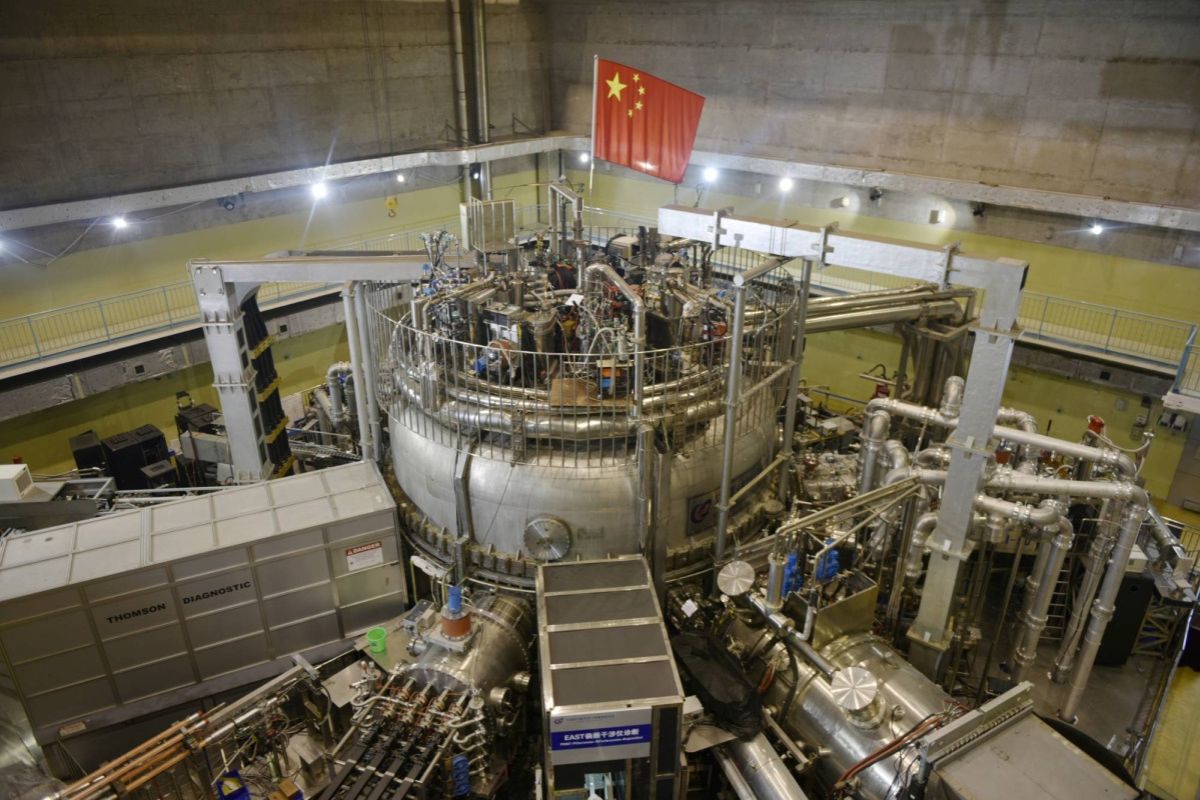Show table of content Hide table of content
Satellite images reveal the construction of a huge Chinese laser fusion complex, surpassing the American NIF. This infrastructure, located in Mianyang, raises questions about its dual potential: unlimited clean energy or advances in nuclear weapons? A development closely scrutinised by the United States.
Worrying satellite images
The shadow of the nuclear arms race is once again being cast, not in the form of underground tests, but through the prism of nuclear fusion research. Recent satellite images reveal that China is in the process of building a laser fusion complex on an unprecedented scale, a development closely scrutinised by US intelligence services, as images from Reuters shows. The facility, located near the city of Mianyang in south-west China, is raising questions about its potential implications, both for clean energy production and for improving China’s nuclear arsenal.
The existence of this project, called the “Laser Fusion Major Device Laboratory”, was revealed thanks to the meticulous analysis of satellite images by experts from CNA Corp, an independent US research organisation, in collaboration with the James Martin Center for Nonproliferation Studies (CNS). The images show an imposing structure with four outer arms housing high-power laser arrays, converging on a central experimental bay. It is in this chamber that the fusion experiments will take place, focusing laser energy on hydrogen isotopes to trigger a nuclear fusion reaction.
China China has released a video of a train traveling at 248 mph, the fastest in the world!
Comparisons with the US National Ignition Facility (NIF) in California are inevitable. The NIF, which cost 3.5 billion dollars, reached a historic milestone in 2022 by producing more energy from a fusion reaction than the energy injected by lasers, reaching the famous “scientific equilibrium threshold”. However, according to estimates by Decker Eveleth, a researcher at CNA Corp, the Chinese complex’s experimental bay would be around 50% larger than that of the NIF, suggesting an even greater ambition.
This technological development raises some complex issues. In theory, nuclear fusion offers a clean, abundant and virtually unlimited source of energy, using hydrogen, the most common element in the universe. However, mastering this technology is proving extremely difficult and costly. China’s interest in nuclear fusion, like that of other world powers, is part of a global quest for an alternative to fossil fuels and to guarantee its energy independence.
And what if the objective was broader?
But beyond the energy aspect, research into fusion by inertial confinement is of strategic importance in the field of nuclear weapons. The Comprehensive Nuclear Test Ban Treaty (CTBT), signed by China and the United States, bans nuclear explosions in all environments. In this context, laser fusion experiments make it possible to study the fundamental mechanisms of nuclear detonation, improve confidence in simulation models and design new weapons without the need for real tests.
William Alberque, a nuclear policy analyst at the Henry L. Stimson Centre, points out that any nation with an NIF facility can build confidence and improve existing weapons designs, while making it easier to design future models without physical testing. This statement highlights the grey area between fundamental research and military applications.
China China is adopting the hyperloop concept to launch its trains at 620 mph.
While Chinese officials did not respond to requests for comment, caution remains the order of the day. The scale of the Mianyang facility, the largest of its kind in the world, reflects a significant investment and a determination to be at the forefront of fusion research.
Nothing to worry about
Siegfried Hecker, former director of Los Alamos National Laboratory, another key nuclear research centre in the United States, tempers the concern, however. In his view, for countries that have already carried out numerous nuclear tests, such as the United States, laser fusion experiments serve primarily to maintain the safety and reliability of the existing arsenal. For China, which has carried out a relatively limited number of tests, the contribution of these experiments would be less significant, in the absence of such a vast empirical database.
Omar Hurricane, chief scientist of the famous inertial confinement fusion programme at Lawrence Livermore National Laboratory, also qualifies this statement. He points out that other countries, such as France, the UK and Russia, also operate laser fusion facilities. He stresses that scientific progress is difficult to hinder and that the knowledge acquired can be used for a variety of purposes.
Ultimately, the construction of this gigantic fusion facility in China does not in itself constitute an imminent threat. Rather, it reflects a scientific and technological ambition, in an area where the boundaries between basic research, clean energy and weaponry are blurred. Monitoring and analysing the data from Mianyang will obviously be important in assessing the real implications of this project, both for the future of energy and for the balance of nuclear forces in the world. Aerial observation, in this case, is not just about counting missiles, but deciphering complex equations.


